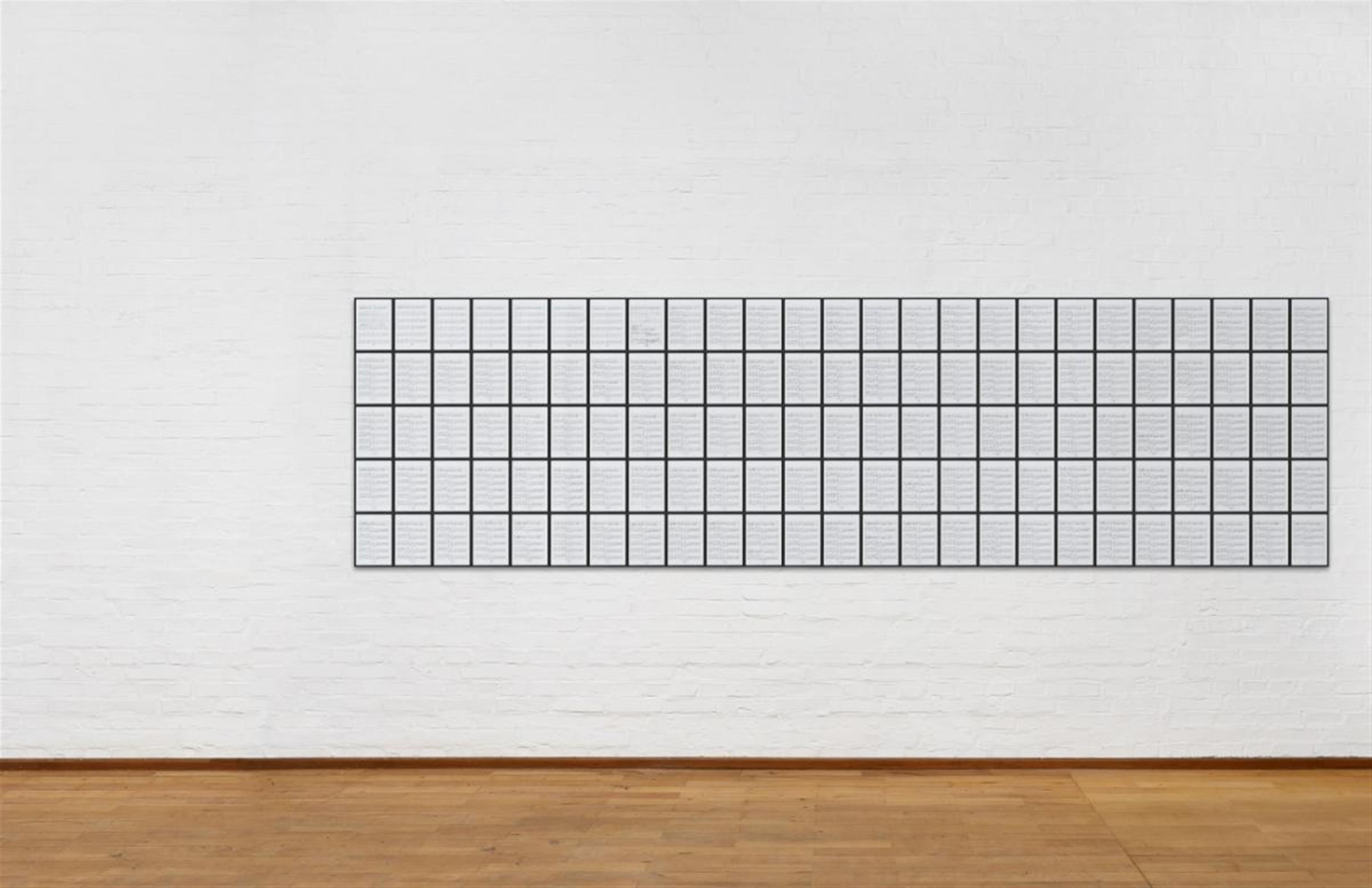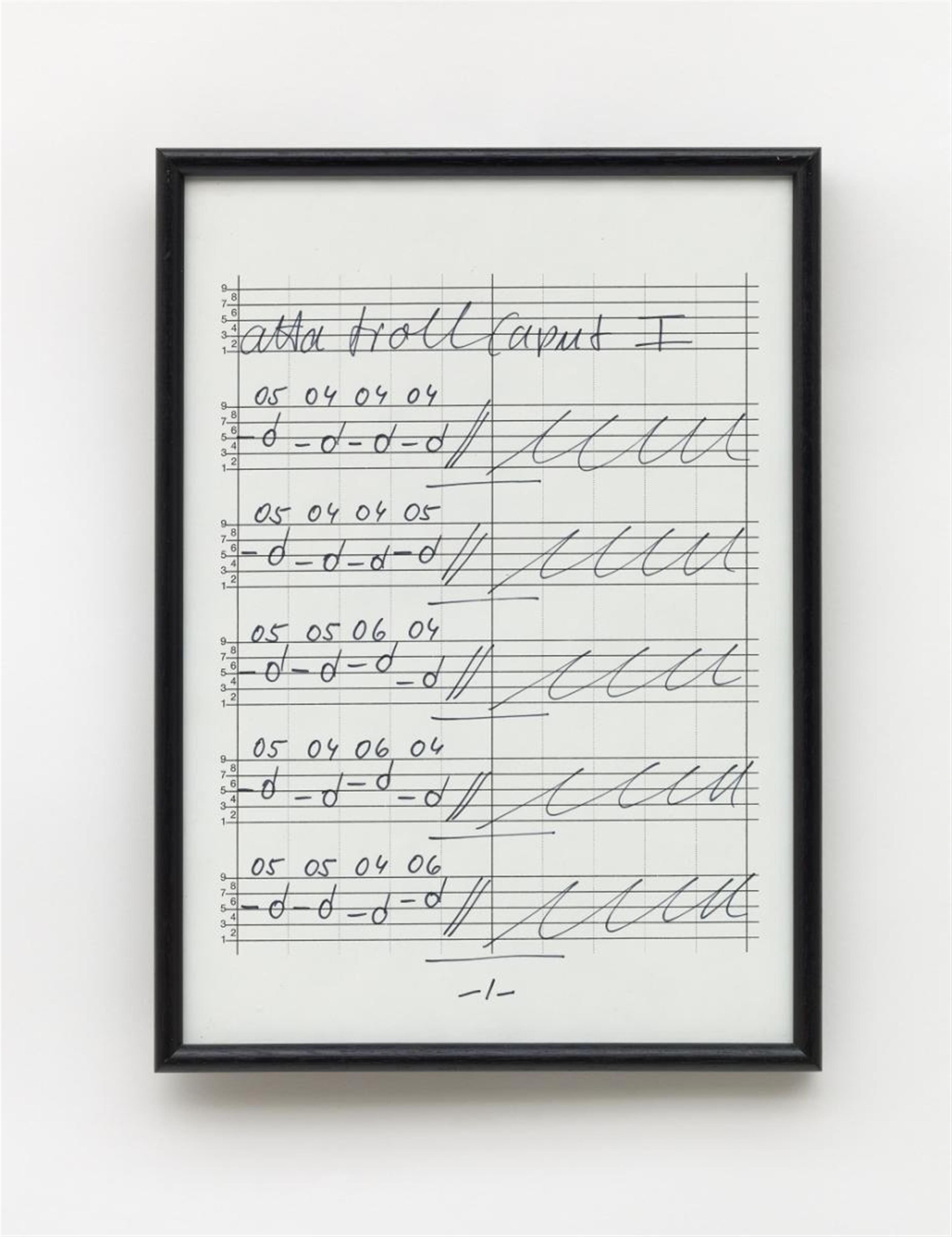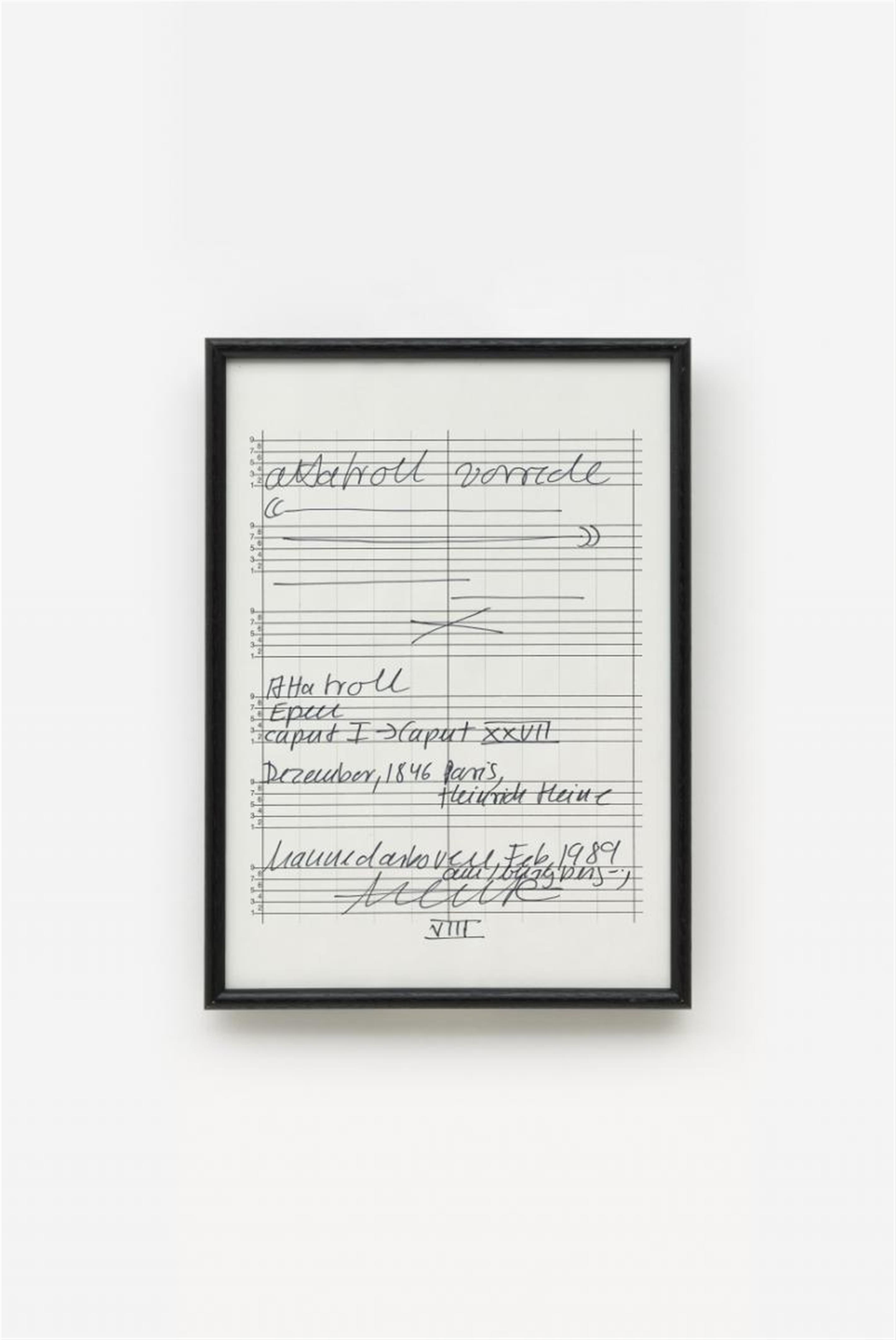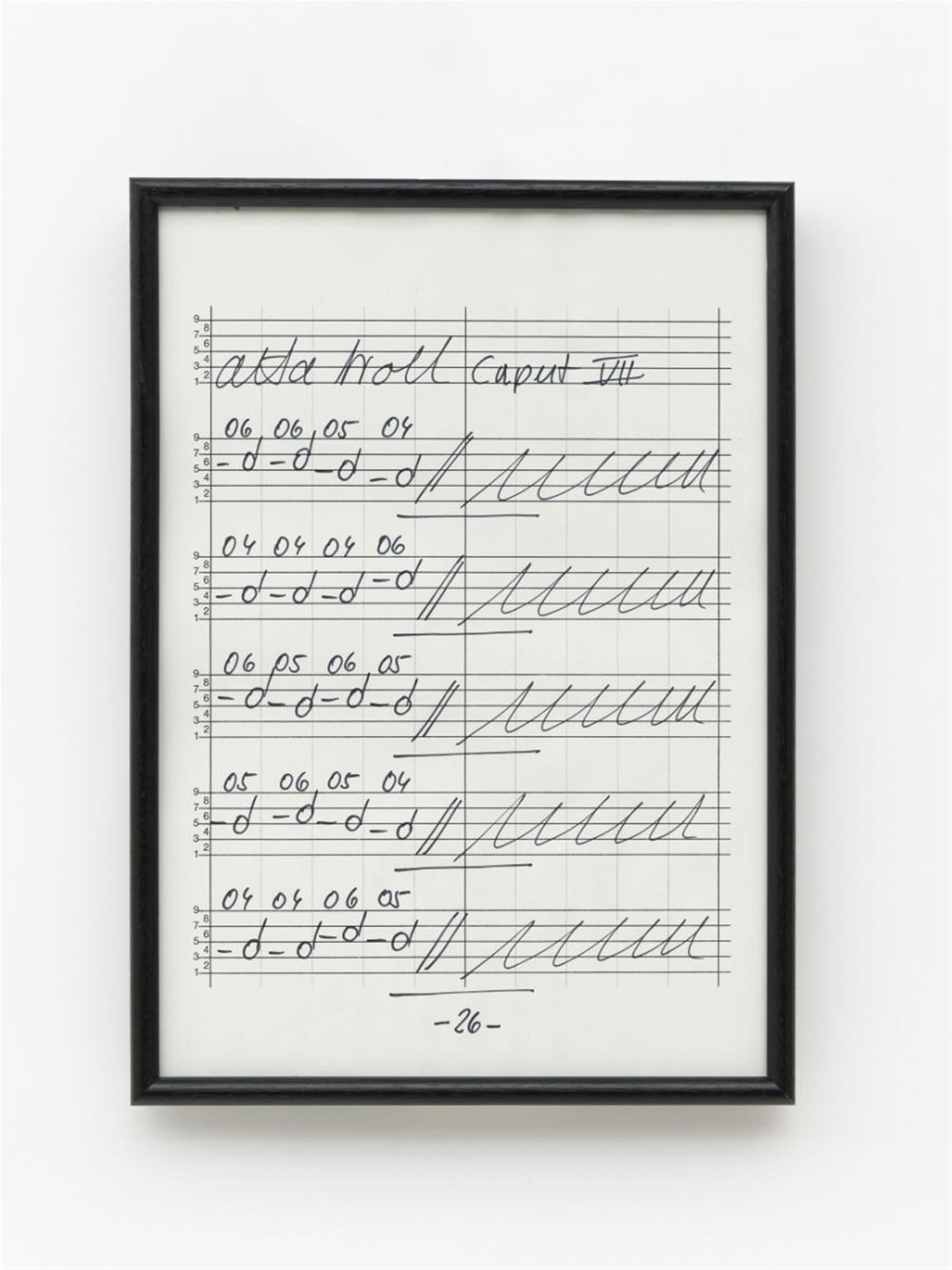Work in 125 parts: each felt tip pen on paper 29.7 x 21 cm, each framed under glass. The work contains 8 pages preface and 117 pages epic poem. Page 8 of the preface signed, dated, titled and inscribed 'Atta Troll Epen caput I -> caput XXVII Dezember, 1846 Paris, Heinrich Heine, hanne darboven, Feb. 1989 am burgberg heute' [crossed out].
Hanne Darboven is regarded as a protagonist of international conceptual art: It was with a certain matter-of-fact consistency that she filled thousands upon thousands of sheets with her characteristic handwriting, subjecting her output to a strict structure of figures, letters and words - a structure which is not always readily accessible to the viewer. The basic principle in Darboven's oeuvre is her treatment of time, as she documents its course partly on the basis of experiences in her own life and partly on literary sources: From the mid-1970s the artist started to take an interest in the works of Homer, Immanuel Kant, Alexander von Humboldt, Johann Wolfgang von Goethe and others. They were the ones who provided her with “guidance in her life” (Hanne Darboven Foundation).
In this work her focus was on a socio-critical epical poem by Heinrich Heine, entitled Atta Troll - A Midsummer Night's Dream (1841/42). Heine tells the story of a dancing bear called Atta Troll as a clear allusion to the developments and ideas of the pre-March movement. The bear succeeds in escaping from captivity and then tries and fails to live a life in freedom. In Hanne Darboven's adaptation there is none of the political innuendo or cynicism of the original work. Instead, in her version of “Atta Troll”, she tells a story that bears the marks of matter-of-factness and a totally systematic approach. In the left-hand half of the sheet she places some musical notes and figures on bars, and on the other side she places her characteristic wavy writing which we also find in many of her other works. She uses this structure with consistency, so that her 117 sheets display a visually expressive idea that can be played on an instrument. The transformation from text to music and thus to a medium that is substantially determined by timing started to play a role in Darboven's art from 1980 onwards. In her musical system each digit is represented by a certain note: 0 stands for a d, 1 for an e, etc. She counts the individual words in each verse line and then inserts the relevant numbers into the relevant line in the stave. Take, for instance, the first two verses of Caput I (see illus.):
“Rings umragt von dunklen Bergen, (5 words)
die sich trotzig übergipfeln, (4)
Und von wilden Wasserstürzen (4)
Eingelullelt, wie ein Traumbild, (4)
Liegt im Thal das elegante (5)
Cauteret. Die weißen Häuschen (4)
Mit Balkonen; schöne Damen (4)
Stehn drauf und lachen herzlich. (5)
Here, by darksome heights surrounded,
Mountain peaks that loom, defiant,
And by wild cascades of water
Lulled to slumber, like a vision,
Elegantly, in the valley
Nestles Cauterets. The gleaming
Little houses; lovely ladies
On the balconies are laughing.
(Translation: http://davidsbuendler.freehostia.com/troll1.htm)
Entered into the relevant places on the scale, this creates the sequence B,A,A,A / B,A,A,B. Using this method, Darboven translated 24 verses into music.
The artist started to take an interest in Atta Troll quite early, in 1975. Her first version of the work, however, was somewhat shorter and was displayed at the Museum of Art in Lucerne. It was based on a different system where she counted the words and then wrote them out, so that the first line became “onetwothreefourfive”, the second one “onetwothreefour”, etc.
Provenance
Galerie Elisabeth Kaufmann, Zurich; Private Possession, Switzerland








